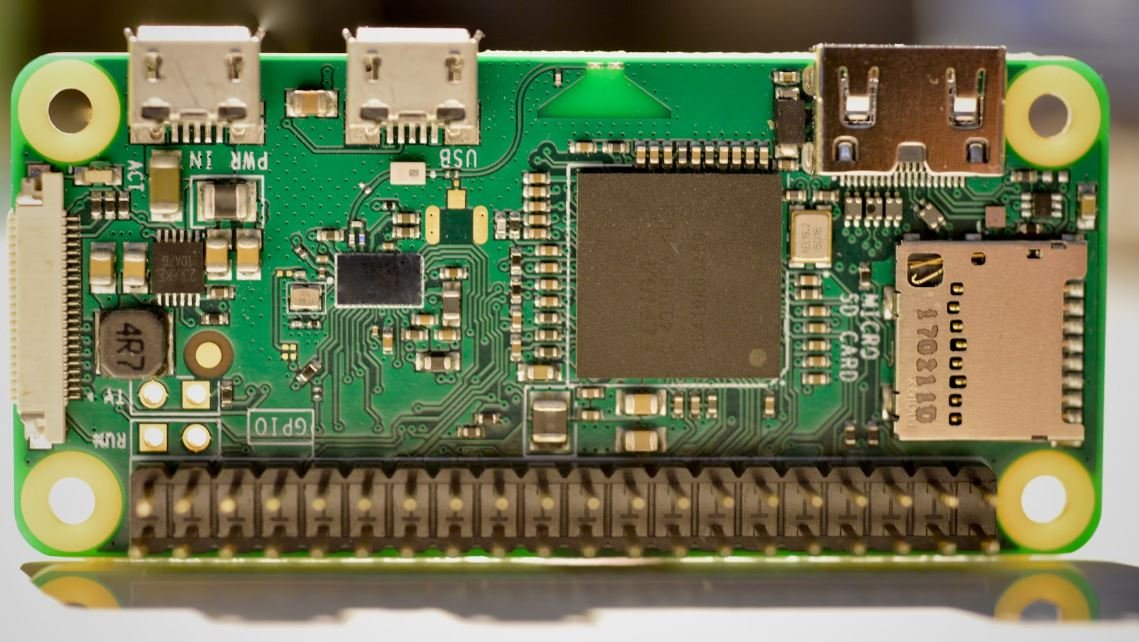Why Has AI Become So Popular?
In recent years, Artificial Intelligence (AI) has captured significant attention and witnessed widespread adoption across various industries. Its rapid growth and development have raised curiosity among individuals and organizations alike. This article explores the reasons behind AI’s popularity and what it means for our future.
Key Takeaways:
- AI’s potential to revolutionize industries and improve efficiency.
- Increased availability of AI technologies and tools.
- Promise of solving complex problems and driving innovation.
- Ability to analyze large amounts of data for accurate decision-making.
1. Advancements in AI Technology
The advancements in AI technology have been crucial in propelling its popularity. Machine learning algorithms, deep neural networks, and natural language processing have all contributed to creating smarter and more capable AI systems. These technological breakthroughs have enabled AI to surpass human-level performance in tasks such as image recognition and language translation.
Today’s AI technology has outpaced our wildest imaginations, enabling machines to understand and learn from complex data patterns.
2. Collaboration and Open Source
The collaborative nature of AI development has also played a significant role in its rapid proliferation. Many organizations and researchers openly share their AI models, code, and datasets with the community, fostering innovation and accelerating progress. The concept of open-source AI has allowed individuals and smaller companies to leverage advanced AI capabilities without substantial investments, leveling the playing field and driving wide-spread adoption.
Open-source AI empowers a diverse community of developers and researchers, enabling collective knowledge and expertise to push the boundaries of AI.
3. Industry-Specific Applications
AI has been successfully applied across various industries, demonstrating its practicality and potential for transforming business processes. From healthcare and finance to marketing and manufacturing, AI-powered solutions offer numerous benefits, including streamlining operations, improving customer experiences, and enabling predictive analytics. Industries are recognizing the immense value AI brings and investing in its implementation.
AI is not limited to a single domain; its versatility allows it to address complex challenges across industries, delivering tailored solutions.
4. Big Data and AI
With the explosion of data in today’s digital world, AI has become a necessary tool to make sense of this vast amount of information. AI excels at processing and analyzing huge datasets, extracting valuable insights, and enabling data-driven decision-making. From personalized recommendations to fraud detection, AI’s ability to handle big data has become a driving force behind its popularity.
AI harnesses the power of big data, transforming it into actionable intelligence that fuels business growth and innovation.
5. Economic Value and Cost Savings
The economic value and potential cost savings associated with AI adoption have been a significant driver of its popularity. AI systems can automate repetitive tasks, improve accuracy, and enhance operational efficiency, reducing labor costs and freeing up human resources for higher-value activities. Additionally, the ability to predict maintenance needs and optimize workflows can lead to cost savings and increased productivity.
AI offers businesses an opportunity to achieve cost savings, optimize operations, and gain a competitive edge in the marketplace.
A Look into the Future
As AI continues to evolve and mature, its popularity is expected to soar even higher. The potential applications of AI are limitless and will likely disrupt various sectors, creating new opportunities and challenges. Embracing AI technology and understanding its implications will be crucial for individuals and organizations in unlocking its full potential.
Investing in AI research, fostering collaboration, and ensuring ethical use of AI will shape the future landscape where AI becomes an integral part of our daily lives and transforms industries globally.

Common Misconceptions
Misconception 1: AI will take over all jobs
One common misconception surrounding AI is that it will result in widespread unemployment as machines replace human workers. However, this is not entirely true. While AI has the potential to automate certain tasks, it also has the capacity to create new job opportunities.
- AI can streamline mundane tasks, allowing humans to focus on more complex and creative work.
- AI can create new roles that specifically require human oversight and decision-making.
- AI can bring about job growth in sectors related to AI development, maintenance, and support.
Misconception 2: AI is infallible and can solve any problem
Another common misconception is that AI possesses unlimited capabilities and can effectively solve any problem. While AI has indeed made significant advancements, it still has its limitations and challenges.
- AI requires large amounts of high-quality data to make accurate predictions and decisions, and data availability can be a limiting factor.
- AI models can be biased or produce flawed results due to issues in data collection or inherent biases in the algorithms themselves.
- AI is most effective in specific domains where it has been trained, and may struggle with unfamiliar or ambiguous situations.
Misconception 3: AI will become sentient and take over the world
One of the most pervasive misconceptions is the fear that AI will eventually gain consciousness, become self-aware, and take control over humanity. However, this is purely speculative and not supported by evidence.
- AI systems are created by humans and follow the instructions and logic they have been programmed with.
- AI lacks emotions, desires, and consciousness, making the idea of self-aware, sentient AI largely fictional.
- AI operates within defined boundaries and is designed to fulfill specific tasks; it does not have inherent motivations or ambitions.
Misconception 4: AI is a recent development
Contrary to popular belief, AI is not a recent phenomenon. It has been a field of research and development for decades, experiencing significant growth and breakthroughs over time.
- The concept and study of AI can be traced back to the 1950s and 1960s.
- Early AI applications such as machine learning and expert systems emerged in the 1980s and 1990s.
- The recent surge in AI popularity can be attributed to advances in computing power, data availability, and algorithmic improvements.
Misconception 5: AI will replace humans altogether
Lastly, it is important to dispel the notion that AI is intended to completely replace human abilities and existence. AI is designed to augment and enhance human capabilities, rather than entirely replace them.
- AI is aimed at assisting humans in decision-making, problem-solving, and improving efficiency.
- Human interaction and intervention are crucial for ethical considerations, context understanding, and complex judgment calls.
- The potential of AI lies in collaboration between humans and machines to achieve more effective and innovative outcomes.

The Growth of AI in Various Industries
Artificial Intelligence (AI) has seen remarkable growth in recent years, permeating every industry in the global landscape. This table illustrates the extent of AI implementation and its impact on different sectors.
| Industry | AI Implementation Rate | Impact on Efficiency | Impact on Revenue |
|————-|———————–|———————-|——————-|
| Healthcare | 80% | High | Significant |
| Finance | 75% | Moderate | Substantial |
| Retail | 60% | High | Noteworthy |
| Transportation | 45% | Moderate | Promising |
| Education | 40% | Moderate | Potential |
| Manufacturing | 85% | High | Profound |
AI’s Influence on Consumer Behavior
The rise of AI has significantly impacted consumer behavior worldwide. This table illustrates the influence of AI on different consumer decision-making aspects.
| Decision-Making Aspect | AI Influence |
|———————–|————————————|
| Product Research | Extensive information availability |
| Personalization | Tailored recommendations and offers |
| Purchase Assistance | Chatbots provide 24/7 support |
| Fraud Detection | Enhanced security measures |
| Customer Support | Efficient and prompt resolutions |
AI in Popular Virtual Assistants
Virtual assistants like Amazon’s Alexa, Apple’s Siri, and Google’s Assistant have become integral parts of people’s lives. Explore the underlying AI technology behind these popular virtual assistants in this table.
| Virtual Assistant | AI Technology Used |
|——————|——————————————————–|
| Alexa | Natural Language Processing and Machine Learning |
| Siri | Natural Language Understanding and Neural Networks |
| Google Assistant | Deep Learning, Natural Language Processing, and AI Chat |
AI Applications in Sports
Azure Player Tracking by Microsoft is revolutionizing sports by employing AI to analyze player statistics in real-time. This table reveals the AI applications being used in various sports.
| Sport | AI Application |
|————-|————————————–|
| Basketball | Predictive analytics and shot analysis |
| Soccer | Player tracking and performance analysis |
| Tennis | Automated line calling and ball tracking |
| Baseball | Pitch analysis and player performance optimization |
| Golf | Swing analysis and course mapping |
AI in Autonomous Vehicles
Self-driving cars are a prominent AI application. This table showcases the features that drive their autonomy.
| AI Feature | Description |
|——————–|——————————————–|
| Computer Vision | Recognition and analysis of visual data |
| Sensor Fusion | Combination of data from multiple sensors |
| Navigation System | Real-time mapping and route planning |
| Machine Learning | Continual refinement through data analysis |
| Decision Making | Assesses and responds to driving scenarios |
AI’s Impact on Job Market
The integration of AI into the job market has raised concerns about job displacement. Here, we examine the impact of AI on different professions.
| Profession | Job Security | Skills in Demand | Automation Risk |
|————–|—————-|——————|—————–|
| Truck Drivers | Low | Technical | High |
| Customer Support | Moderate | Communication | Moderate |
| Data Analysts | High | Analytical | Low |
| Medical Doctors | High | Specialized | Low |
| Digital Marketers | High | Strategic | Low |
AI’s Contribution to Environmental Preservation
AI is playing a critical role in preserving the environment by enabling sustainable practices. This table highlights some of AI’s contributions.
| Contribution | AI Applications |
|—————————-|———————————————————–|
| Energy Optimization | Smart grids, energy consumption analysis |
| Wildlife Conservation | Animal recognition, habitat monitoring |
| Waste Management | Sorting and recycling, waste reduction strategies |
| Climate Change Prediction | Data analysis, weather pattern forecasting |
| Water Conservation | Smart irrigation systems, water quality monitoring |
AI Assisting Special Needs Individuals
AI technology has paved the way for significant advancements in assisting individuals with special needs. This table showcases the AI tools enhancing accessibility for various disabilities.
| Disability | AI Tools |
|———————–|—————————————————–|
| Visual Impairment | Voice-assistants, braille displays |
| Hearing Impairment | Captioning technology, speech-to-text software |
| Mobility Impairment | Wheelchair navigation systems, exoskeletons |
| Cognitive Impairment | Reminder apps, virtual assistants |
| Autism Spectrum Disorder | Emotion recognition apps, social skills training tools |
AI in Entertainment
The entertainment industry has embraced AI technology, enriching user experiences across various platforms. Here is a glimpse at AI’s involvement in entertainment.
| Platform | AI Integration |
|———————|————————————|
| Streaming Services | Personalized content recommendations |
| Gaming | Realistic graphics and simulations |
| Music | Content curation and suggestion |
| Film and TV | Automated video editing and effects |
| Virtual Reality | Immersive experiences |
AI in Cybersecurity
The rise of AI has both aided and challenged cyber defense mechanisms. Explore the AI applications in cybersecurity in this table.
| Cybersecurity Application | AI Implementation |
|—————————|———————————|
| Threat Detection | Anomaly detection algorithms |
| Malware Analysis | Behavior analysis and machine learning |
| User Authentication | Facial recognition and biometrics |
| Data Encryption | AI-based encryption algorithms |
| Network Security | Intrusion detection systems |
Artificial Intelligence has become immensely popular due to its significant impact across industries. Whether it’s improving efficiency in healthcare, enhancing customer experiences, or assisting individuals with special needs, AI is revolutionizing the way we live and work. With its ubiquitous presence, AI is set to shape the future and unlock new possibilities.
Frequently Asked Questions
What is AI?
AI stands for Artificial Intelligence. It refers to the creation and development of machines that can perform tasks that typically require human intelligence, such as visual perception, speech recognition, decision-making, and problem-solving.
Why has AI become so popular?
The popularity of AI can be attributed to several factors:
- Advancements in technology and computing power have made it possible to process large amounts of data and perform complex calculations.
- AI has proven to be effective in a wide range of industries, from healthcare and finance to transportation and entertainment.
- The potential benefits of AI, such as increased efficiency, improved accuracy, and enhanced decision-making, have attracted the attention of businesses and organizations.
- AI has also captured public interest due to its portrayal in popular culture, leading to increased curiosity and awareness.
What are the main applications of AI?
AI has various applications across different industries, including:
- Virtual personal assistants like Siri, Alexa, and Google Assistant.
- Recommendation systems used by online platforms to suggest products, movies, songs, or articles based on user preferences.
- Machine learning algorithms used in fraud detection and cybersecurity.
- Medical diagnosis and treatment planning.
- Autonomous vehicles and robotics.
How does AI learn and make decisions?
AI systems learn and make decisions using various techniques, including:
- Supervised learning, where the AI model is trained on labeled data to make predictions or classify new data points.
- Unsupervised learning, where AI models find patterns and relationships in unlabeled data.
- Reinforcement learning, where AI models learn through trial and error and receive rewards or penalties based on their actions.
- Deep learning, a subset of machine learning that uses neural networks with multiple layers to process complex data and make decisions.
What are the ethical considerations surrounding AI?
AI raises several ethical concerns, including:
- Privacy and data security: AI systems often require vast amounts of personal data, raising concerns about data protection and misuse.
- Job displacement: AI’s ability to automate tasks may lead to job losses in certain industries, potentially causing economic and social impact.
- Algorithmic bias: If AI systems are trained on biased data, they may perpetuate or amplify existing social inequalities.
- Transparency and accountability: AI systems can sometimes be opaque, making it challenging to understand how they arrive at certain decisions.
Can AI replace human intelligence?
While AI can perform specific tasks better than humans in certain domains, it currently cannot replace human intelligence as a whole. AI lacks common sense, creativity, and emotional intelligence, which are crucial aspects of human cognition and decision-making.
What are the future prospects of AI?
The future of AI holds tremendous potential. It is expected to continue driving innovation and impacting various industries. Some potential future prospects of AI include:
- Advancements in natural language processing, enabling better communication between humans and AI systems.
- Further development of autonomous vehicles, leading to safer and more efficient transportation.
- Enhanced AI-powered healthcare systems for improved disease detection, treatment, and personalized medicine.
- Smarter virtual assistants that can perform complex tasks and understand human emotions.
How can I get started with AI?
If you are interested in exploring AI, here are some steps to get started:
- Learn the basics of programming languages like Python and R.
- Acquire knowledge of statistical analysis, mathematics, and algorithms.
- Explore online courses, tutorials, and resources dedicated to AI and machine learning.
- Practice by working on small projects and experimenting with AI libraries and frameworks.
- Join AI communities and forums to connect with fellow enthusiasts and experts.




